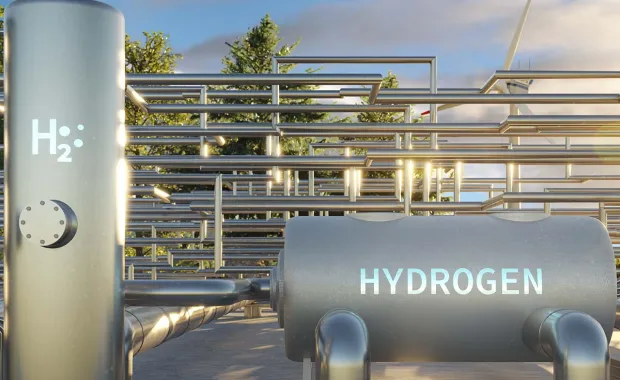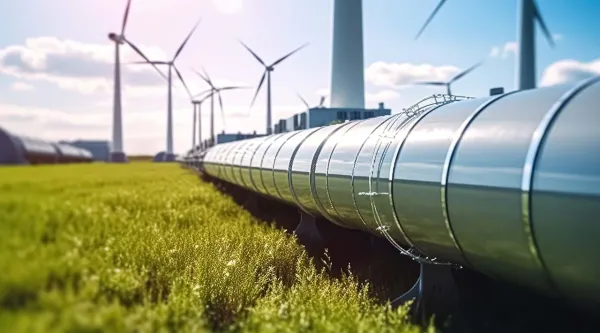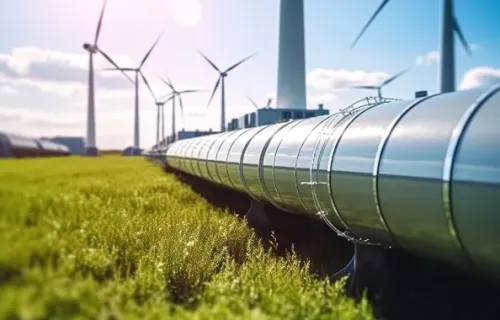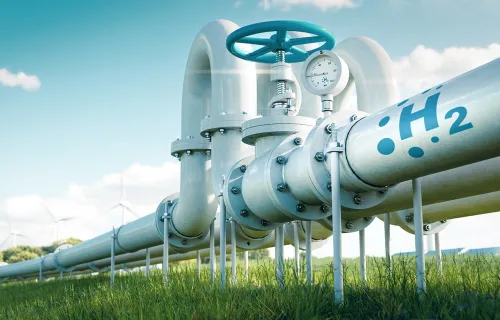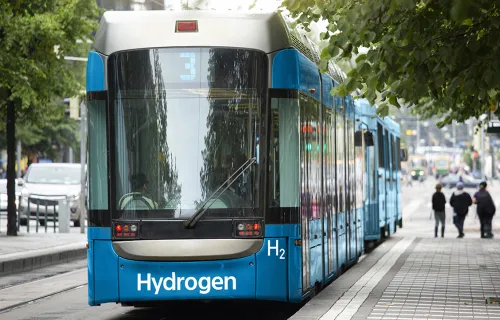In this second installment of Tim ten Brundel’s 2023 research, investigating the need for data exchange within the developing hydrogen market, he dives deeper into production, transportation, storage and consumption, and how they will be affected. Tim concludes his research with a view of the current landscape and the way forward.
Hydrogen production
The production of hydrogen often is seen as a flexible mean in a broader renewable energy system. During periods of excessive energy, batteries can store energy on an hourly basis. However, for longer periods, using excessive energy to produce hydrogen often is recognized as a balancing means. Each timeframe here has its suitable flexibility means.
Given the challenges of producing hydrogen, currently, the business case is not always easy to make. Reasons for this are, for example, uncertainties of the specific operational costs and future fluctuating price levels of renewable energy and so of hydrogen.
For hydrogen producers, accurate forecasts on the availability and price levels of renewable energy are considered crucial to technically operate electrolyzers and to communicate the future available quantities of hydrogen to consumers. In addition, this data allows hydrogen producers to determine when they produce hydrogen (or not). In addition, a data exchange with both electricity and hydrogen grid operators is also seen as necessary, in the context of energy balancing within a region or country.
Hydrogen transportation
Hydrogen transportation, among other means, is expected to include regional and national pipeline infrastructures, tube trailers, rail and shipping. Besides pure hydrogen, in many cases, it is also expected to be transported through the structure of carriers. An example includes ammonia, due to its favorable transportation conditions, whereas methanol and liquid organic hydrogen carriers also are mentioned as potential transportation means.
A relatively new scenario for pipeline transportation includes bi-directional flow between regional and national grids. If there are surpluses of hydrogen in a region, flows of hydrogen can be expected from regional hubs to a national transportation grid.
For a hydrogen transportation system to function, one requirement being addressed is the qualification method. Because it will be part of a larger energy system, parties see a first-come, first-served qualification structure as insufficient. Instead, priority-based qualification could be an option, allowing the fluctuating supply of hydrogen produced with renewable energy to be prioritized over constant amounts of non-renewable hydrogen.
In terms of data needs of hydrogen transportation companies, short timelines for hydrogen nominations will be essential. For example, due to weather dependencies of hydrogen production, a 30- or 15-minute timeframe could be considered to keep transport chains in balance.
Hydrogen storage
Hydrogen storage is expected to fulfill different roles for different time frames. Hydrogen could be produced and stored during periods of renewable energy surpluses. During periods of renewable energy shortages, hydrogen can be used in different energy-consuming instances and/or transformed into other energy carriers.
For large-scale hydrogen storage operators, a big challenge seems to be uncertainties in hydrogen market developments. Since it includes an emerging market, it is difficult to create business cases for future large-scale hydrogen storage. However, a significant amount of time is needed to realize these storages.
Regarding the data needs of hydrogen storage, it can be expected that precise data, on the needed storage volumes for different time frames, will be essential. Since hydrogen, produced with renewable energy, will be affected by weather conditions, storage patterns are also expected to be different compared to fossil-based storage.
Hydrogen consumption
When it comes to the consumption of hydrogen, the interests of consumers differ per sector. For industry, a base load demand can be expected. However, when dependent on renewable energy, in addition to storage, flexibility within the offtake of hydrogen is also expected to be required to support the balancing of the energy system.
An issue for some of the future large-scale hydrogen consumers includes their location, outside of selected industrial clusters to be connected through hydrogen pipelines. For example, within the Netherlands, the intended national transportation grid will initially connect these clusters. Accordingly, it is expected that hydrogen will also be produced decentralized at the point of consumption, supplemented by the existing producers, often delivered by truck or rail.
From a data perspective, real-time hydrogen production insights can expect to be needed by consumers, to recognize patterns and steer offtake operations accordingly.
Way forward
Hydrogen is evolving to be a crucial part of the energy transition. Currently, market parties are developing various parts of its supply chain. The United Nations, national and regional governmental institutions are assisting the evolving hydrogen market in different ways, while simultaneously regulations are shaped and global hydrogen streams are being established. Overarching these developments is the topic of ‘Data Exchange.’
Within this white paper, we addressed various market parties their challenges, and data exchange needs. As discussed, many dependencies can be expected within the envisioned hydrogen market and the overarching renewable energy system. This research aims to enable the discussion on the need to exchange data within the evolving hydrogen market. This is to monitor its various market dynamics and optimize its functioning within the energy system.
Read part one of Tim's white paper "What essential data exchange can be anticipated in the evolving hydrogen market?”
